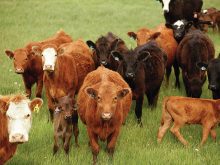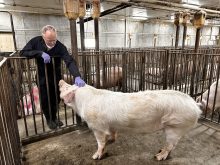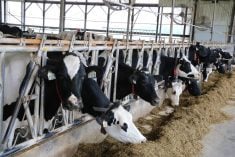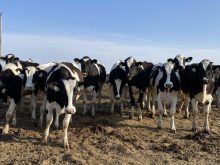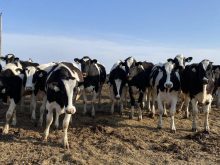Cattle grubs have been largely forgotten by Canadian cattle producers over the last 20 years.
Young producers may not know what I am talking about but those in their 50s will remember the amount of hide and internal damage caused by larvae migrating close to the spine or the esophagus, and the breathing holes created when they pupate.
The cattle then try to protect themselves with a warble. I haven’t seen one of these breathing holes for more than 20 years and had thought the warble fly was all but exterminated from Canada.
Read Also

Beef check-off collection system aligns across the country
A single and aligned check-off collection system based on where producers live makes the system equal said Chad Ross, Saskatchewan Cattle Association chair.
Slaughter audits done in the 1990s showed a very low incidence of damage from cattle grubs after treatment, around 0.1 percent. It decreased to less than that about five years later.
We don’t see warbles now because the products were effective and almost all producers treat.
The pour on cattle grub treatments started in the 1950s with products similar to organochlorines. These were not entirely effective. Then the organophosphates came along with products such as fenthion (spotton) that also controlled lice.
We then progressed to the macrocytic lactone family that includes all the ivermectin products. The warble is very sensitive to these products so clinical cases have been almost eliminated in Canada. Would they return if we were to stop treating?
Dr. Doug Colwell is a leading expert on warbles and other external parasites and conducts re-search at the Agriculture Canada Lethbridge Research Centre. From 2008-10 he and his colleagues did a lot of blood sampling looking for cattle’s exposure to warble flies during the summer.
Antibody evidence suggests the flies are still out there and between 25 and 50 percent of the cattle population shows exposure. There may be some resident untreated cattle that harbour the larval forms of this parasite and allow the life cycle to complete itself.
The larvae will survive in horses and bison but evidence suggests the insects don’t live to become a viable fly.
Recently a few bison hides were seen with warble holes so we know the larvae reach the back. Horses were once highly affected but decreased incidence in cattle allowed their problems to disappear as well.
A few ranches were also sampled and one in particular showed an increase in two wet years. Another ranch had not undergone any treatment the previous year and its exposure rate was higher.
Colwell and others have found that a certain amount of the larval stages are killed during their migration through the body and don’t make it to the skin surface. If even one larva survives, we will see it inside the warble.
Several countries including Great Britain went on an aggressive campaign to eradicate warbles and were able to do so but it took many years. Other countries in Europe have tried and failed because neighboring countries did not have a program.
There are many questions to be asked as resistance to common treatments develops.
Do we need to redevelop lice and warble specific products? Evidence shows that if warbles are not treated they will come back, but how long will that take?
Should we treat for warbles using the macrocytic lactones every two or three years?
There should be a reporting system if any warble damage is found at packing plants, feedlots or veterinary clinics so traceback could occur to find the herd source.
Surveillance must continue so we can keep watch for what once was a serious weight loss and carcass damaging condition of the entire Canadian cattle herd.





